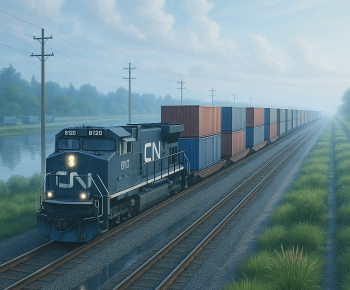Why is rail transport becoming a popular choice for exporters in Central Asia?

Yesterday's backup plan is today's fashion.
Just a few years ago, the railway in Central Asia was perceived as outdated and inconvenient. Exporters more often looked to road, air, or sea transport. But now the picture has changed: more and more companies are openly choosing rail, and not just because of price. Rail has become a symbol of balance, reliability, and even image.
Geography that benefits business
Central Asia is uniquely located at the crossroads of routes between China and Europe. This makes the region a strategic hub, allowing exporters to bypass maritime delays and air travel restrictions. For exporters, this isn't a backup plan, but an opportunity to control delivery times.
Infrastructure Investments
Kazakhstan, Uzbekistan, and other countries are actively modernizing their railway networks: new lines are being built, terminals are being renovated, dry ports and logistics centers are being established. All this makes transportation faster and more predictable. Today, the China–Kazakhstan–Europe route takes approximately 15–18 days, compared to 35–40 days by sea. For many industries, this is a decisive factor.
Balancing price and speed
Air transport is the fastest but most expensive option. Sea travel is cheap but slow. Rail offers a compromise: higher than sea rates, but significantly faster and, most importantly, more stable. For exporters of electronics, textiles, and agricultural products, this balance is crucial.
Environmental friendliness as an argument
Global companies are increasingly paying attention to their carbon footprint. Rail transport produces fewer CO₂ emissions per ton-kilometer than air or road transport. This allows exporters to demonstrate their commitment to "green logistics" to their European partners. For some transactions, this factor is decisive.
A new image for the railroad
Railways are no longer associated with archaism. Tracking services, electronic documents, and integration with digital platforms make rail transport a part of modern logistics. Exporters can now track their cargo as easily as placing an order on a marketplace.
What's next?
Forecasts show that traffic through Central Asia will only grow in the coming years. And it's not just about transit: the region itself is becoming an active player in export markets. Today, choosing rail seems like a trend, but tomorrow it could become an industry standard.